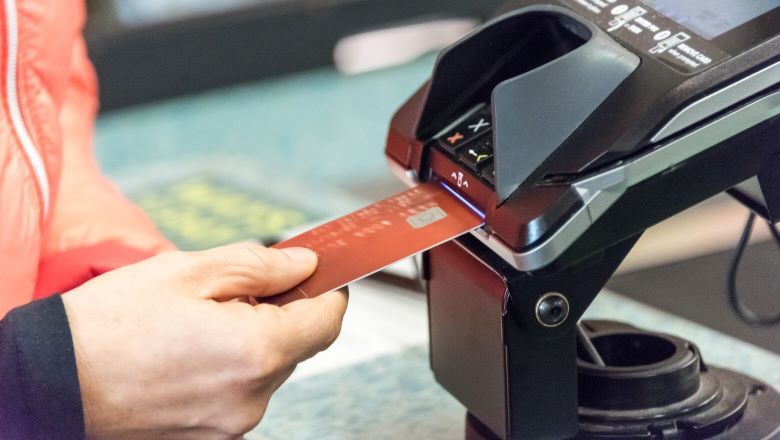Guide to Building Credit With No Credit History
Credit is often regarded as a catch-22: You have to have credit to access credit products, particularly borrowing opportunities that are more competitive. For example, a positive credit history can help you access consumer loans at a lower interest rate, or qualify for a credit card with a lucrative rewards program. But without an existing credit history, it might be hard to get approved for these opportunities.
However, everyone starts with zero credit history. Building a credit profile doesn’t happen overnight, but learning how to build credit when you have none can help you get there.
What Is Established Credit?
Establishing credit means that you have a history of past and currently active credit accounts with which you borrowed money from an entity or financial institution to purchase goods or services.
Lenders and creditors review your established credit to decide whether to extend you new credit. It’s also evaluated by employers, utility companies, and landlords to help them decide whether to accept your application or offer you service.
5 Tips to Build Credit With No Credit History
It is possible to build credit even with no credit history. If you have no credit, build credit using one or more of the following strategies.
1. Become an Authorized User
One way to build credit with no credit is to ask a family member or friend who has good credit to add you as an authorized user on their credit card account. Some lenders report card activity to the credit bureaus for both the primary cardholder and any authorized users on the card, so the primary cardholder’s good credit behavior could reflect positively on your credit.
As an authorized user, you aren’t liable to repay the debt on the card. However, the reported data still will reflect on your credit history.
2. Get a Secured Credit Card
Getting a credit card for the first time can be challenging if you immediately apply for an unsecured card that isn’t tied to collateral. A secured card can be easier to obtain when building credit from no credit — just make sure the card issuer reports the account’s activity to the credit bureaus.
Secured cards typically require you to make a small initial deposit into a separate bank fund. The card issuer then gives you a credit card usually with a credit limit that matches your deposit amount. As you use the card and make prompt payments, you can build credit. Once you achieve at least a fair credit score, you may be able to get upgraded to an unsecured credit card.
3. Report Your Rent and Utility Payments to Credit Bureaus
To boost your progress in building credit with no credit, you can self-report your on-time rent payments, cell phone payments, and everyday utility bills.
Third-party services, like Piñata and Rental Kharma, give you momentum to develop your credit history using your rental payment track record. Similarly, the credit bureau Experian empowers consumers to establish their credit profile by reporting phone and utility bill payments via Experian Boost.
4. Apply for a Retail Card
Credit cards that you can only use at a specific merchant, like a gas card or department store card, are typically easier for consumers with no credit history to get approved for. Plus, retail cards’ lower credit limit and restricted use makes them a good option if you’re looking to build credit.
Recommended: When Are Credit Card Payments Due?
5. Take Out a Credit-Builder Loan
A credit-builder loan is an installment loan that’s typically for a small amount, like a few hundred dollars. The lender puts this amount into a separate savings account on your behalf, and you’ll make payments to repay that loan.
During this process, the lender will report your account activity to the credit bureaus. And once the loan’s term ends, you’ll get the money that accumulated from your regular payments.
How Long Does It Take to Build Credit for a Beginner?
Establishing your credit can take anywhere from three to six months, and it typically takes at least six months to develop a credit score. Once your credit account is active and there’s borrowing and repayment activity on the account, your lender or card issuer will report the new account and its activity to the credit bureaus.
What Credit Score Should You Start With?
A starting credit score doesn’t start at zero. The baseline, or lowest FICO score you can have, is actually 300. If you are building credit from no credit, however, you simply wouldn’t have a credit profile to your name, meaning you’d have no credit score as opposed to a low credit score.
Recommended: How to Avoid Interest On a Credit Card
Tips for Using a Credit Score to Your Advantage Once You Have It
Once you’ve gone through the necessary motions to build credit, here’s how you can make the most of it:
• Shop around before opening new credit accounts. Lenders and credit card issuers are competing for your business. Compare product features, interest rates, fees, and terms before moving forward with a new loan or credit card to ensure you get the most competitive option available to you.
• Apply for credit cards with better rewards. Once you’ve established your credit and are confident that you can borrow responsibly, consider applying for a credit card that offers a rewards program. For example, look into cards that offer cash back, points, or miles so you get a little something back from purchases you’d already make.
• Maintain responsible borrowing habits. After you’ve put in so much work to build your credit score, you don’t want to wreck it. So follow responsible borrowing habits, like not borrowing more than you can afford to pay back based on your monthly expenses and income.
• Be aware of the factors affecting credit scores. Understand how paying off debt affects your credit score, as well as how your credit utilization, credit age, credit mix, and new accounts influence your score. By knowing what makes up your credit score, you’ll better know how to continue building it.
Recommended: Does Applying For a Credit Card Hurt Your Credit Score?
The Takeaway
There are many ways to build your credit when you have no credit history. However, all of the strategies above take a few months to get your credit record established. Once you have a credit score going, you can access other credit products, like rewards credit cards.
Whether you're looking to build credit, apply for a new credit card, or save money with the cards you have, it's important to understand the options that are best for you. Learn more about credit cards by exploring this credit card guide.
FAQ
How fast can you build credit with no credit?
Generally, if you’re starting with no credit, it can take anywhere from three to six months to build your credit. The exact timeline depends on the credit scoring model that’s used and your lender’s timeframe for reporting new accounts to the credit bureaus.
What is the easiest way to establish a credit history?
The easiest way to establish a credit history is by asking to become an authorized user on a family member or close friend’s credit card account. This approach bypasses having to personally submit your own credit card application. Instead, you’ll piggyback on the primary account holder’s positive borrowing and repayment practices to build your credit record.
What is my credit score if I have no credit?
If your credit profile is nonexistent — meaning you’ve never opened a credit-based account under your name — you won’t have a credit score at all. Having a credit score of 0 is actually a myth; instead of a number, you’re simply considered credit invisible.
How long does it take to build credit from 0 to 700?
The time it takes for consumers who are new to establishing their credit to reach a credit score of 700 varies. However, generally, if you have no credit you could potentially reach a 700 credit score after six months of a reported payment history.
Photo credit: iStock/fizkes
Third-Party Brand Mentions: No brands, products, or companies mentioned are affiliated with SoFi, nor do they endorse or sponsor this article. Third-party trademarks referenced herein are property of their respective owners.
Financial Tips & Strategies: The tips provided on this website are of a general nature and do not take into account your specific objectives, financial situation, and needs. You should always consider their appropriateness given your own circumstances.
Disclaimer: Many factors affect your credit scores and the interest rates you may receive. SoFi is not a Credit Repair Organization as defined under federal or state law, including the Credit Repair Organizations Act. SoFi does not provide “credit repair” services or advice or assistance regarding “rebuilding” or “improving” your credit record, credit history, or credit rating. For details, see the FTC’s website .
SOCC1122008




